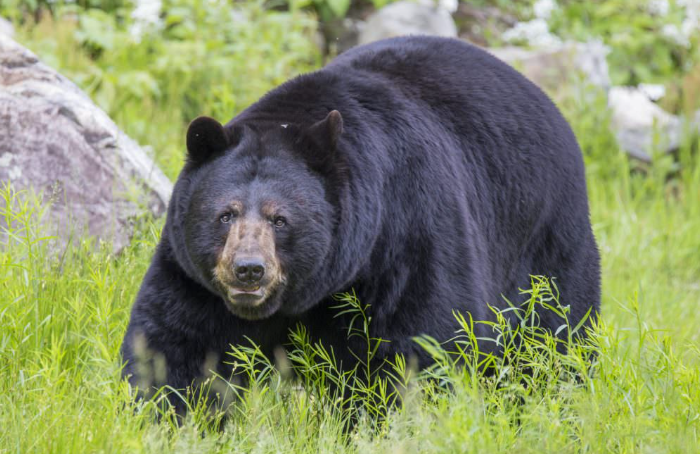
Black bears are fascinating creatures that roam the forests and mountains of North America. With their sleek black fur and curious nature, they capture our attention whenever we come across them in the wild. But have you ever wondered what sustains these majestic animals? What does a black bear eat to thrive in its natural habitat? From lush greenery to opportunistic snacking, their diet is as diverse as the landscapes they inhabit. Join us as we delve into the dietary habits of black bears, uncovering their favorite foods and how different seasons influence what’s on their menu!
A Look at the Diet of Black Bears
Black bears are opportunistic feeders, meaning they adapt their diet based on availability. Their menu is diverse and can change with the seasons.
During spring, black bears emerge from hibernation eager to replenish lost energy. They often snack on tender green shoots and sprouts. Berries become a favorite treat as summer approaches.
As autumn rolls in, these bears indulge in high-calorie foods to prepare for winter sleep. Acorns and nuts provide essential fats that help increase body weight.
While primarily herbivorous, black bears aren’t shy about consuming animal matter when the opportunity arises. Insects like ants and larvae can be found at the top of their list during warmer months.
This varied diet allows them to thrive in various habitats across North America while also reflecting their adaptability to changing environments. Understanding what a black bear eats offers insights into their ecological role.
Plant-Based Foods in a Black Bear’s Diet
Black bears are primarily herbivorous, with a significant part of their diet consisting of plant-based foods. They have a keen sense of smell that helps them locate food sources like berries and nuts from great distances.
Berries are particularly popular among black bears. Blueberries, raspberries, and strawberries provide essential nutrients and energy during the summer months. These fruits play a vital role in fattening up for winter hibernation.
Nuts such as acorns and hickory nuts also feature prominently in their dietary choices. The high-fat content makes these an excellent source of calories.
In addition to fruits and nuts, black bears enjoy various plants, including grasses, roots, and even flowers. This diverse diet allows them to adapt to different habitats throughout North America while meeting their nutritional needs effectively.
Animal-Based Foods in a Black Bear’s Diet
Black bears are opportunistic feeders, and animal-based foods make up an essential part of their diet. While they primarily gravitate toward plants, they won’t pass up a chance to feast on protein-rich sources when available.
These curious creatures often scavenge for carrion or hunt small mammals like rodents. This adaptability allows them to thrive in various environments where food can be scarce.
In addition to scavenging, black bears may also prey on insects such as ants and bees. These tiny delicacies offer a surprising boost of nutrition during warmer months.
Fish is another significant component of their diet, especially for those living near rivers and streams. They skillfully catch salmon during spawning season, capitalizing on this abundant food source.
This blend of plant-based and animal-derived nutrients helps sustain black bears through different seasons and varying environmental conditions.
Seasonal Changes in a Black Bear’s Diet
Black bears are highly adaptable, and their diet shifts with the seasons. In spring, they emerge from hibernation hungry for tender greens and early flowers. Their cravings lead them to young shoots and dandelions.
As summer rolls in, black bears feast on berries blueberries, raspberries, and blackberries become prime targets. They also indulge in insects like ants and grubs during this time.
Fall brings a different focus. Bears begin bulking up for winter by consuming acorns, nuts, and fruits to gain weight quickly. This is essential for survival during hibernation.
Weather patterns can influence these seasonal preferences too. A late frost or heavy rainfall might delay berry growth or affect nut production, prompting bears to adjust their diets accordingly.
Understanding these changes helps us appreciate the adaptability of black bears in connection with their environment.
Human Interaction and Its Impact on a Black Bear’s Diet
Human interaction has a significant impact on the diet of black bears. As urban areas expand, these animals often find themselves foraging near human habitats. This can lead to an unhealthy reliance on human food sources.
Bears are opportunistic feeders. They will munch on garbage, birdseed, and pet food if given the chance. Such diets can result in nutritional imbalances that affect their health and behavior.
Moreover, this attraction to human settlements increases the risk of bear encounters, leading to dangerous situations for both bears and people. Efforts to secure trash and minimize attractants become crucial in keeping these magnificent creatures wild.
Education plays a key role here. The more people understand how their actions influence bear diets, the better they can coexist with wildlife while preserving natural eating habits for black bears. Simple measures can make all the difference in fostering healthier ecosystems.
Understanding and Protecting the Eating Habits of Black Bears
Understanding and protecting the eating habits of black bears is crucial for their conservation. These magnificent creatures play an important role in the ecosystem, influencing plant growth and aiding in seed dispersal. As omnivores, they help maintain a balance within their habitats.
Human interaction has dramatically altered these natural behaviors. When bears become accustomed to human food sources, it can lead to unhealthy diets and dangerous encounters. Awareness of what a black bear eats allows us to minimize negative interactions by securing trash and avoiding feeding them.
Conservation efforts also focus on preserving their natural habitats. Protecting areas rich in diverse flora ensures that black bears have access to ample food sources throughout different seasons. This not only supports healthy populations but also promotes biodiversity.
Educating communities about coexistence with wildlife fosters respect for these animals’ needs while ensuring public safety. By understanding the intricacies of a black bear’s diet, we empower ourselves to make informed decisions that benefit both humans and wildlife alike.